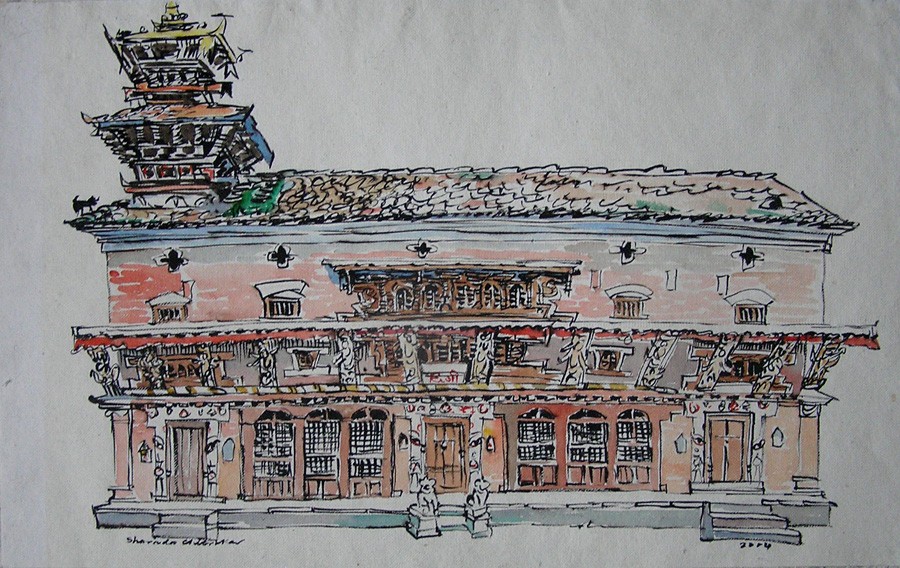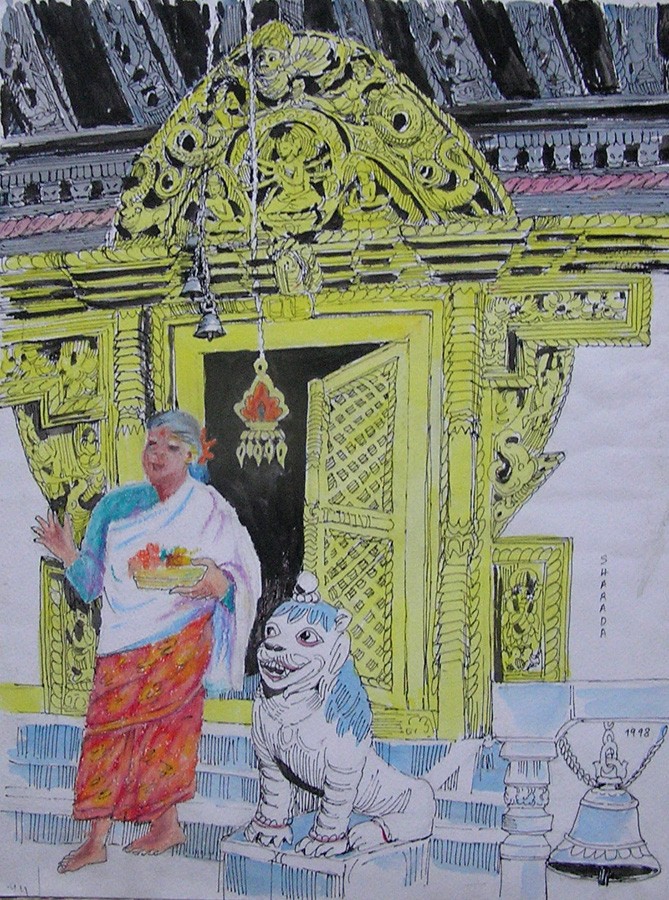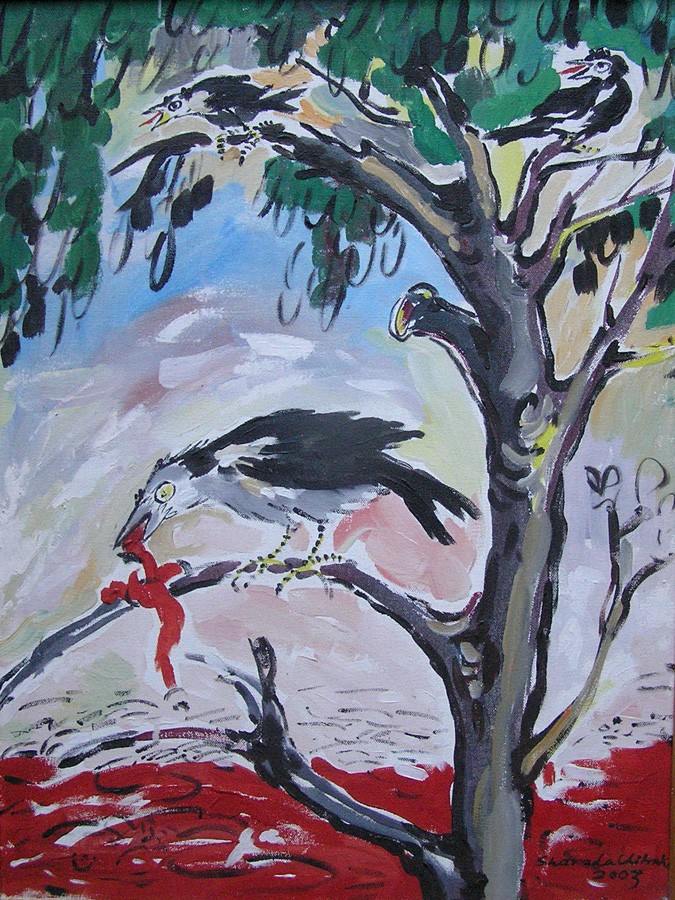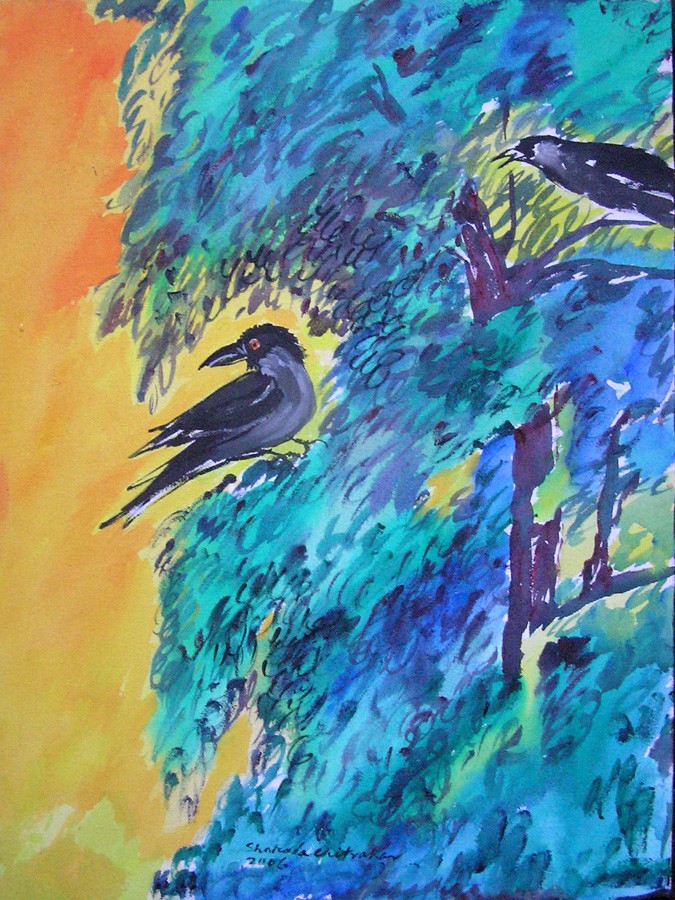Sharada Chitrakar
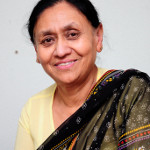
Sharada Chitrakar’s works capture the beauty of natural landscape including the images of various birds, flowers and trees. The landscape generally includes fields, meadows, mountains and forest. The image of crow is recurrent in her works. The atmosphere gives a sense of peace and tranquility. As she represents the nature as it is, her works are realistic in technique. Water colour, her favorite medium creates a soothing effect. Sometimes, the cultural images and architecture are reintegrated in natural setting. The images of architecture include pagoda temples, monasteries and thatched-roofed country cottages.
Sharada Chitrakar’s works capture the beauty of natural landscape including the images of various birds, flowers and trees. The landscape generally includes fields, meadows, mountains and forest. The image of crow is recurrent in her works. The atmosphere gives a sense of peace and tranquility. As she represents the nature as it is, her works are realistic in technique. Water colour, her favorite medium creates a soothing effect. Sometimes, the cultural images and architecture are reintegrated in natural setting. The images of architecture include pagoda temples, monasteries and thatched-roofed country cottages.
However, some of her paintings depict the horrible and gruesome condition of ordinary Nepalis under the omnipresent tyranny and domination in the past and present through analogy. Despite being landscape, they have socio-political undercurrent. Her colours reinforce the values associated to the images. The big black birds represent the tyrannical force, and small birds are oppressed by them. She throws light on the fact that political system and constitution have been changed but the socio-economical condition of ordinary people has remained same. She expresses socio-political concerns through ironic representations. A group of tyrants is replaced by another with different mask without any substantial change in attitude and action. A group of so called leaders performs the drama of democracy and leaves the stage for other actors to perform the same ritual in different guise. Ordinary people have not yet felt and experienced the democracy. Political tyrants as symbolized by the huge black birds exploit the words only to cheat the people. The network of tyranny, domination and corruption reaches to every corner from centre to periphery. They are forced to believe lies and roam within impasse with agony and terror as her tiny birds. Innumerable women pass their life in legalized slavery. Many have-nots work as machine for their landlords and creditors whose conduct is legalized with the twist of words. As there is no way out in real life situation, the alienated victims turn toward myths and supernatural power as symbolized by temples, stupas and religious shrines. Using analogy, the artist depicts the ever present tyranny and domination in Nepali socio-political scenario. However, her mild and soft colours conceal such motifs in surface level.
Sharada (1941) was born in the Puun (Chitrakar) family belonging to the Newar Community in the Kathmandu valley. As a member of the occupational caste of traditional painters, she started her training in fine art of painting at a very young age. Her father the late Tejbahadur Chitrakar was the pioneer teacher of contemporary art in Nepal.
Sharada joined the School of Fine Arts and also graduated in humanities from Tribhuvan University. She paints aquarelles and acrylics, as well as draws in pen and ink. Her skill in drawing and painting was honed when she was engaged for several years as a book illustrator for school text books. She received prestigious award in the First National Paintings Exhibition held in 1966. She takes great interest in on-the -spot painting of nature, traditional architecture, and religious festivals. Her life time works were exposed to public view in a grand solo exhibition held in 2002. Her second solo was in 2004 when she exhibited a number of works that she created on- the- spot following the procession of the great chariot festival of Bungdeo through its journey from Bunga to Patan, which was once a twelve year major religious event of the Valley. Her works found pride of place in several national art exhibitions. She hardly misses an opportunity to participate in art workshops and group shows. She has herself organized several group exhibitions and art workshops promoting women artists, child artists and also the traditional painters.
Her father-in-law the late Krishna Bahadur Chitrakar was a traditional painter who practiced the centuries old traditional art form of the Newar ritual art Punjya. She is trying hard to keep the tradition alive and takes part in performing her family duties in the ritual art. Moreover, she is actively engaging herself in documentation of and research into the art form and its artists.
Sharada is married and has two sons who are living abroad.
